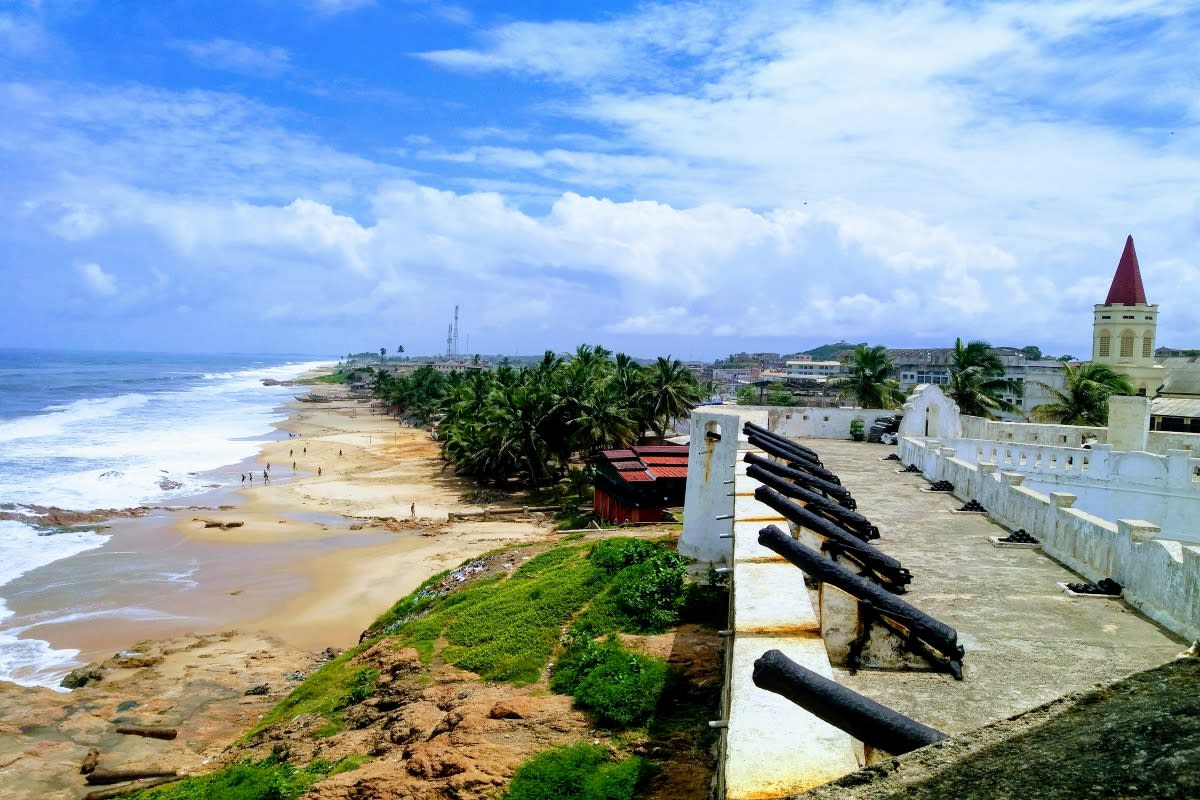A Must-See Experience: The Captured Africans and Resilience of The Diaspora Exhibit

The potential of augmented reality is astounding, and many of us find it particularly compelling when coupled with the idea of a museum without walls. But after my conversation with Gaidi Finnie, the executive director of the San Diego African American Museum of Fine Art, I saw a whole new side to art, history, and culture—one served on a digitally enhanced platter.
“We’re a museum without walls. And the cool thing about that is, it used to be a liability, but now it’s not. This is the best thing we can do because we don’t have to pay rent for all these buildings and all that stuff. Yet I can do exhibits anywhere in the world.” Finnie, who has spent his whole career in non-profit, discussed what it takes to run a museum without walls.
Exploring Themes Beyond Slavery
Because of the museum’s lack of physical constraints, Finnie has been able to pioneer shows around the United States and now Ghana with his upcoming project, The Captured Africans and Resilience of the Diaspora exhibit. This exhibition is an experience that crosses borders, allowing people worldwide to celebrate the resilience of the human spirit.
Visitors will journey back in time as Finnie and colleagues recreate the haunting corridors of the slave dungeons that once held the hopes and dreams of countless souls. However, Finnie, who was inspired to develop the exhibition after an eye-opening visit to a Cape Coast slave fortress in Ghana, clarifies that Captured Africans is not about slavery.
“It’s not about slavery at all—these 18 million people they took to that dungeon created countries, cities, islands, etc. There’s Bermuda and the Bahamas, Jamaica, Memphis, St. Martin, St. Kitts, etc. That’s the Resilience of the black people,” he explains.
“It’s a three-part exhibit,” Finnie Continues. “The first part is to go to Africa and install augmented reality of leaders who proved our resiliency, like Toussaint Louverture, Malcolm X, Pele, Usain Bolt, or Riri; you know what I mean? And I will put them in augmented reality inside the castles themselves, where you can view and learn and understand about these people through your phone, through the augmented reality”.
Understanding Augmented Reality
So, how does augmented reality work? I ask Finnie, who has held several positions in the arts, including managing director at the North Coast Repertory Theater and director of the Museum of Photographic Arts.
“We’ve done one in Central Park called Say Their Names, which is about black people that got killed by racism or police brutality. And that was augmented reality”, Finnie explains as he introduces me to an innovative approach to exhibitions.
Say Their Names Memorial New York was a joint production of the San Diego African American Museum of Fine Art, the Schomburg Center for Research in Black Culture, the New York Urban League, and other cultural organizations in New York City. Fifty virtual pedestals displaying more than two hundred photographs of Black people who perished as a result of racism over two centuries were part of the show, which was an augmented reality experience. The exhibit integrated digital photography, technology, and art with Central Park’s Seneca Village neighborhood, located on West 85th Street, hosting the event in September 2022.
Among those honored at the memorial were the victims of the May mass shooting at a Tops supermarket in Buffalo, New York, as well as Eric Garner, Emmett Till, George Floyd, and Breonna Taylor. Now, through “The Captured Africans and Resilience of the Diaspora,” visitors can fully immerse themselves in the experiences of those who overcame tremendous hardships. This ground-breaking display will debut in Ghana and the United States as a reminder of our shared resilience.
For more information about the upcoming The Captured Africans and Resilience of the Diaspora exhibit and the Say Their Names Memorial, please visit the website of The San Diego African American Museum of Fine Art.

